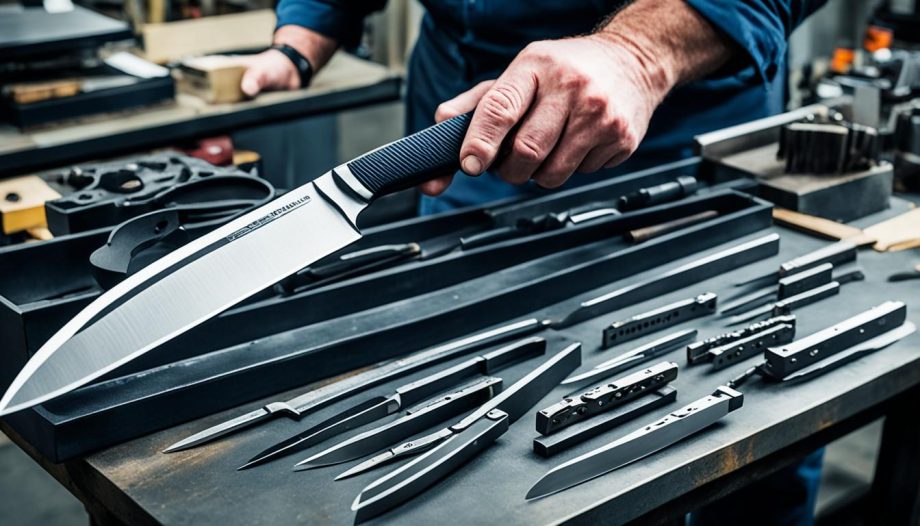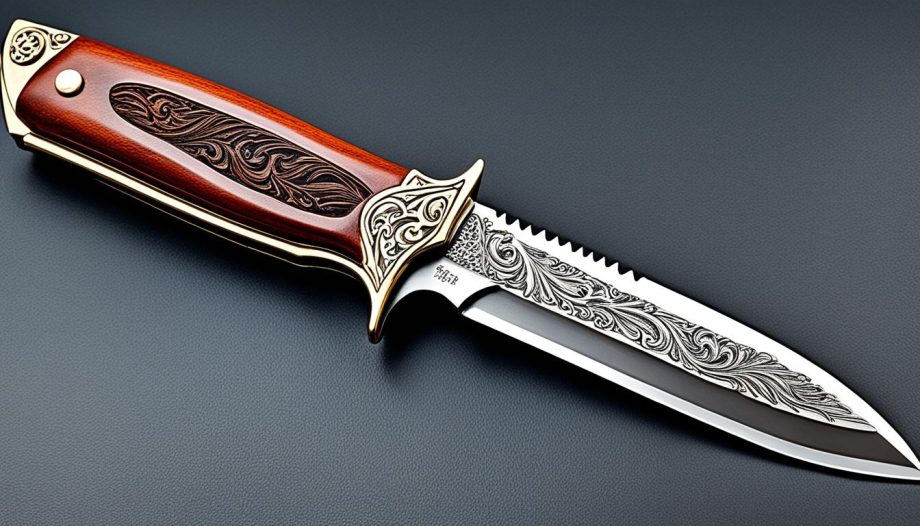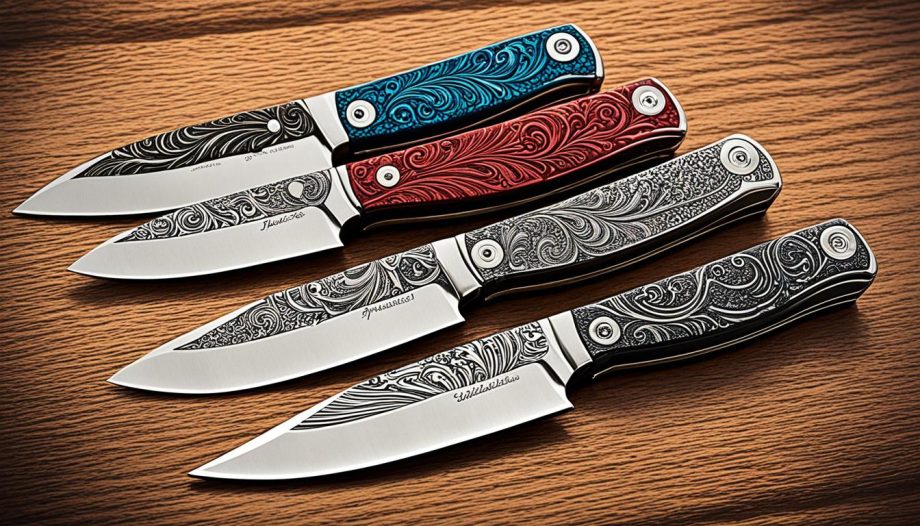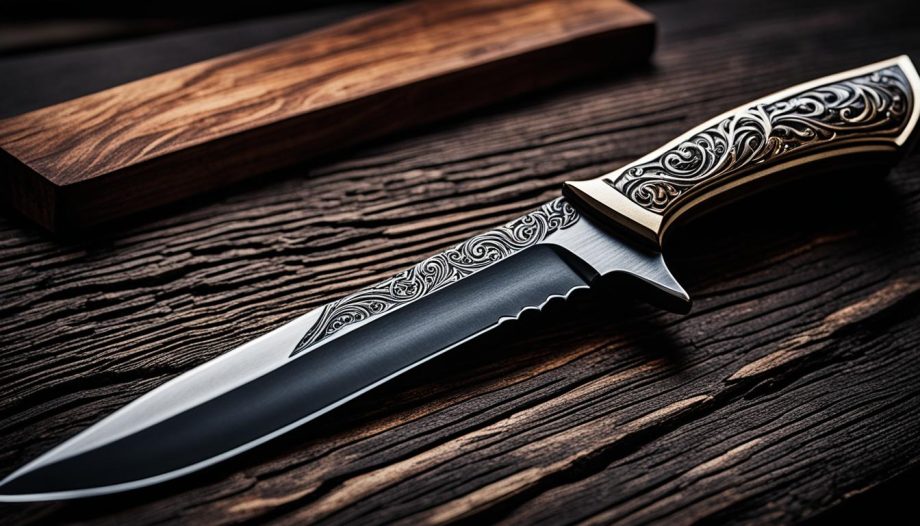Custom knife makers have a crucial decision to make when it comes to selecting the right steel for their blades. The choice of steel directly impacts the sharpness, strength, and durability of the knives they craft. With numerous options available, knife makers carefully consider the unique qualities and characteristics of each steel.
Some of the popular steels favored by custom knife makers include 0-1, 0-6, W-1, W-2, 10-series steels, 5160, 52100, L-6, A-2, D-2, M-2, 440C, 154 CM, and ATS-34. Each steel possesses its own set of properties, such as hardness, toughness, wear resistance, and corrosion resistance.
Custom knife makers carefully evaluate these qualities to ensure their blades deliver exceptional performance and longevity. Whether it’s a tool steel known for its durability and excellent wear resistance or a carbon steel praised for its sharpness and ease of resharpening, the choice of steel plays a vital role in creating knives that meet the needs and preferences of both professionals and enthusiasts alike.
Tool Steel for Knife Making: A Popular Choice Among Custom Knife Makers
When it comes to crafting high-quality knives, custom knife makers understand the importance of selecting the right steel. Tool steel, in particular, has emerged as a popular choice due to its exceptional durability, strength, wear resistance, and hardness. These qualities make tool steel blades well-suited for a wide range of applications, from everyday tactical knives to outdoor essentials.
Within the realm of tool steel, there are several popular grades that custom knife makers rely on. Two notable examples include O1 and D2.
O1: This tool steel grade is widely praised for its availability and cost-effectiveness. Apart from being readily accessible, O1 is highly regarded for its ease of sharpening. With the right tools and techniques, custom knife makers can achieve a razor-sharp edge on O1 tool steel blades. This grade is favored for its balance of hardness, toughness, and wear resistance.
D2: Known for its excellent corrosion resistance and edge retention, D2 tool steel is another sought-after choice among custom knife makers. This grade is particularly popular for knives that will endure challenging outdoor conditions or come into contact with corrosive agents. The high chromium content in D2 imparts exceptional resistance against rust and staining, ensuring the longevity of the blade’s performance.
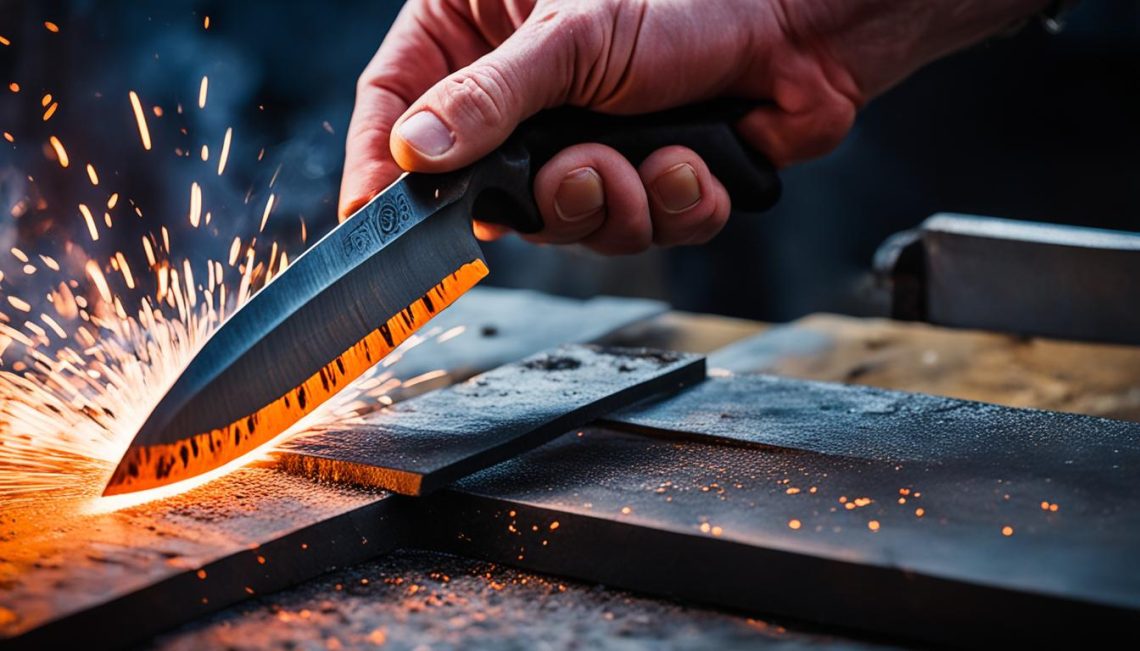
Custom knife makers appreciate the versatility of tool steel grades like O1 and D2. Whether it’s crafting EDC (Everyday Carry) knives or specialized outdoor blades, the exceptional properties of tool steel enable them to deliver exceptional quality and performance to their customers.
Carbon Steel and Stainless Steel: Versatile Options for Knife Making
When it comes to knife making, custom knife makers have a range of options at their disposal. Two of the most versatile choices are carbon steel and stainless steel.
Carbon steel is popular among knife makers for its high carbon content, which provides the blade with the desired hardness and strength. Grades like C1045, C1075, and C1090 offer varying levels of carbon content and versatile tempering capabilities. The result is exceptional sharpness and ease of resharpening, making carbon steel knives a favorite among enthusiasts.
On the other hand, stainless steel blades, typically composed of ferritic or martensitic stainless steels, offer superior corrosion resistance. Common grades used in knife making include 420 and 440. Stainless steel knives are highly durable, making them suitable for various applications, including cutlery materials.
When choosing between carbon steel and stainless steel for knife making, knife makers consider their desired qualities for the blades. Carbon steel blades are known for their sharpness and ease of resharpening, while stainless steel blades excel in corrosion resistance. Ultimately, the choice depends on the specific needs of the knife maker and the intended use of the blade.

